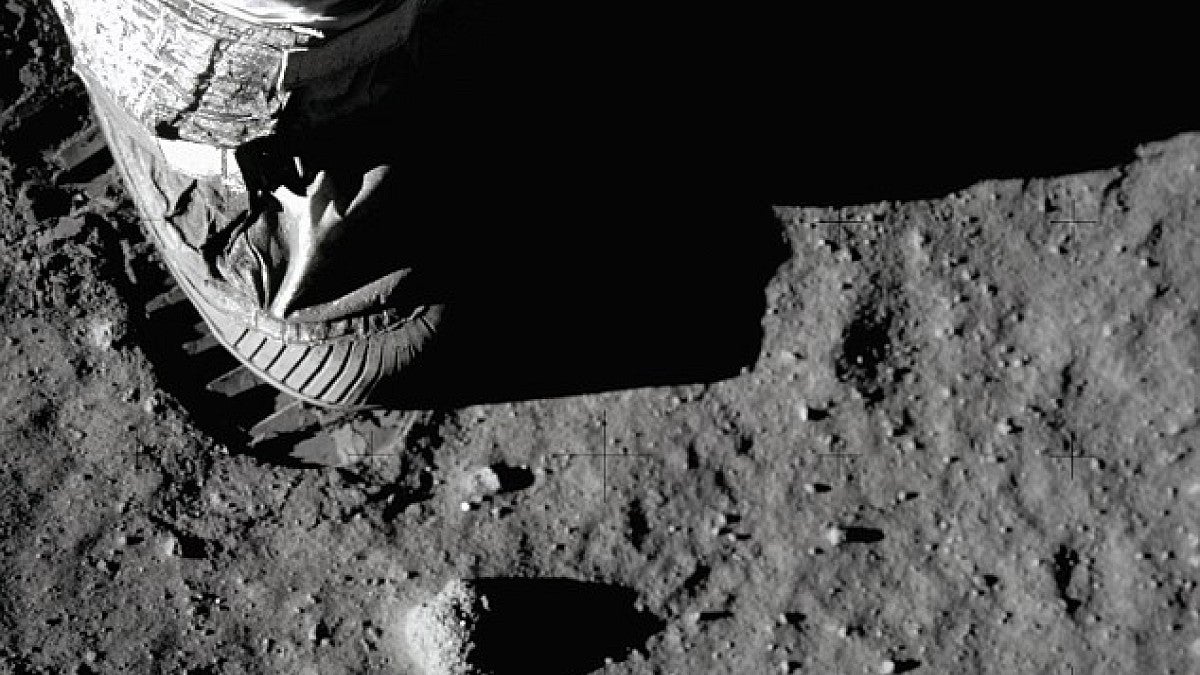When Neil Armstrong stepped onto the moon in 1969, the world heard him proudly proclaim “That’s one small step for man, one giant leap for mankind.”
But the world might have misheard the astronaut, according to new research from a UO linguistics professor.
After Armstrong touched back down on Earth, he insisted that he actually said “that’s one small step for ‘a’ man, one giant leap for mankind.”
Which makes a lot more sense. Without the “a” preceding “man,” he was essentially stating that the moon landing was both a small step and a giant leap for mankind. Unless he was broadcasting an intergalactic triple jump, that’s a bit contradictory.
But it’s difficult to confirm his claims using the audio recording of the moon landing. Between less-than-stellar recording technology and ample background noise, examinations of the sound files have produced mixed opinions over what the astronaut actually said.
When these audio recordings left Armstrong’s lunar locution an unsolved mystery, the UO’s Melissa Baese-Berk and scholars from Michigan State University and Ohio State University stepped in with their linguistics expertise to investigate the matter. Their analyses are detailed in a paper published Sept. 7 in PLOS ONE.
“Linguistic analysis gives us tools to examine Armstrong's claim,” said Baese-Berk, who specializes in speech production and perception. She focuses her research on issues such as the challenge of listening to speech in adverse conditions, like noisy galaxies, and the cognitive processes listeners use to decode messages with ambiguous language, like “for” versus “for a.”
Sound familiar?
The astronaut’s speech intrigued Baese-Berk because she saw an opportunity to apply her linguistics expertise to the broader world. While she concedes we’ll probably never uncover conclusive evidence to validate Armstrong’s assertion, she believes it is possible to examine the feasibility of his claim from the standpoint of both speech production — what he said — and speech perception — what people heard, and whether that differed from reality).
This kind of audio mismatch is actually a common problem in speech processing because many factors, such as noise, muddled dialogue and accents, force listeners to decipher ambiguous words.
According to Baese-Berk, listeners usually can get it right by considering context or the grammaticality of a sentence.
For instance, if someone hears “I’m hungry for a –eal”, and the last word is unclear, the listener will use context clues to correctly fill-in-the-blank with “meal” instead of similarly sounding words like “heel” or “seal” or “wheel”.
But shorter function words, like “for” and “for a,” present a greater challenge for listeners. If someone’s speech lacks sufficient syntactic information, listeners must resort to other tactics to decipher speech.
These tactics include cues like rate of speech. When listeners hear someone speaking fast, they predict that they will receive more acoustic information, more words. Whereas, when listeners hear slower, more rhythmic speech, they expect fewer syllables.
Now, listen to how Neil Armstrong talked when he set foot on the moon. Determining that he was speaking on the slower end of the spectrum is not rocket science. Which means in theory, listeners could have easily processed his “for a” as “for,” given that they were expecting fewer words from the slow-talking astronaut.
Baese-Berk and researchers decided to put this theory to the test.
“We wanted to examine cases of ‘for’ and ‘for a’ both in terms of their acoustic properties but also in terms of how people perceive these types of phrases,” Baese-Berk said.
In other words, the speed at which talkers say “for” versus “for a” and how listeners hear those words.
To do this, Baese-Berk and crew conducted a pair of time-based experiments using both talkers and listeners. They recruited participants from an area close to Armstrong’s hometown of Wapakoneta, Ohio, to eliminate one element of acoustic variability by ensuring a close match to the astronaut’s dialect.
In the first study, the researchers examined the production side of speech by analyzing how 40 different talkers produced both “for” and “for a” to determine whether enough overlap existed to create an “acoustically ambiguous environment.”
The results of the study showed that the production of “for” and “for a” are indeed “durationally ambiguous,” meaning Armstrong technically could have uttered either one.
The second experiment assessed whether the perception of Armstrong’s words could be different from reality. Considering the astronaut faced what Baese-Berk described as a “perfect storm” of conditions for misperception — the technical difficulties of recording on the moon in 1969, the presence of ambiguous function words and the absence of sufficient syntactic context — that’s a real possibility.
The researchers had 50 listeners transcribe sentences that included “for a” at two different speeds, using language closely mimicking the amount of contextual information provided by Armstrong. As expected, the group reported not hearing the “a” nearly twice as often when the phrase was presented slowly.
Do the results of these experiments prove Neil Armstrong was telling the truth when he insisted he said “for a”?
“These results support the hypothesis that when target speech containing ‘for a’ is relatively fast compared with a (slower) context — similar to conditions apparently present in Neil Armstrong’s speech — listeners tend to perceive one word — for — rather than two words ‘for a,’” Baese-Berk writes.
Translation: Neil Armstrong probably was not all talk.
—By Emily Halnon, University Communications


